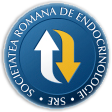
- Login
- Register
- Home/Current Issue
- About the journal
- Editorial board
- Online submission
- Instructions for authors
- Subscriptions
- Foundation Acta Endocrinologica
- Archive
- Contact
 Romanian Academy
Romanian Academy
 The Publishing House of the Romanian Academy
The Publishing House of the Romanian Academy

ACTA ENDOCRINOLOGICA (BUC)
The International Journal of Romanian Society of Endocrinology / Registered in 1938in Web of Science Master Journal List
Acta Endocrinologica(Bucharest) is live in PubMed Central
Journal Impact Factor - click here.

-
Case Report
Sima A, Vlad AR, Timar B, Cotoi L, Sima L, Vlad M, Timar R
Insulin Autoimmune Syndrome in a Young Caucasian WomanActa Endo (Buc) 2021 17(2): 248-250 doi: 10.4183/aeb.2021.248
AbstractA young Caucasian woman presents several episodes of severe fasting hypoglycemia. Fasting lab tests revealed: glycemia 28 mg/dL, insulinemia 143.3 μU/mL, insulin antibodies above 100 U/mL, leading to the diagnosis of insulin autoimmune syndrome. Due to lack of clinical improvement after 2 months, prednisone was started at 0.5 mg/kg/day, and then tapered by 5 mg every 5 days. Three weeks after discontinuing corticotherapy, the patient had no more severe fasting hypoglycemia, but occasionally postprandial mild hypoglycemia. Fasting lab tests showed: glycemia 83 mg/dL, insulinemia 58.6 μU/mL. At 5 hours during oral glucose tolerance test glycemia was 33 mg/dL, insulinemia 152.9 μU/mL. -
Case Report
Sencar E, Calapkulu M, Sakiz D, Unsal I, Bostan H, Cakal E
The Occurrence of Subacute Thyroiditis after the Amelioration of Hypercortisolism Following Transsphenoidal Surgery in Cushing's DiseaseActa Endo (Buc) 2023 19(2): 249-251 doi: 10.4183/aeb.2023.249
AbstractOnly a few subacute thyroiditis (SAT) cases secondary to hypocortisolemia developed after successfully treating Cushing's disease (CD) have been reported. In this report, we present an SAT case, which developed immediately after discontinuation of steroid treatment for hypocortisolemia after the successful treatment of CD. A 54-year-old female patient who had recently been diagnosed with type 2 diabetes mellitus was admitted to our center with complaints of proximal myopathy and obesity. Serum cortisol did not suppress adequately after the 1 mg dexamethasone suppression test. Pituitary MRI of the patient with increased basal plasma ACTH level revealed a 6 x 5 mm right-sided adenoma. After successful surgical treatment, the patient was given ten months of steroid therapy due to a suppressed corticotroph axis. Shortly after the steroid treatment was discontinued, the patient was admitted with neck pain, fever, and thyrotoxicosis. The patient was diagnosed with SAT, and methylprednisolone treatment was started again. The underlying pathophysiological mechanisms in SAT cases that develop after the treatment of CD can only be speculated. One possible mechanism could be that the glucocorticoid deficiency develops after effective treatment of hypercortisolism alters the immunological responses or generates self-reactive cells and prepares an appropriate environment for the thyrolytic process. -
Endocrine Care
Mitu F, Dumitriu I.L., Schiriac C.E. , Vata L.G., Gurzu B
Effect of Supervised Lifestyle Changes on Metabolic Syndrome-Associated InflammationActa Endo (Buc) 2013 9(2): 249-262 doi: 10.4183/aeb.2013.249
AbstractBackground. Weight loss associated with long-term lifestyle changes has significant beneficial effects on metabolic syndrome (MetS) features on obese patients; unfortunately, the weight recidivism rate is high and the weight fluctuations could increase the cardiovascular and metabolic risk. On the other hand, there are many data about the endocrine role of adipose tissue. Objective. Taking into account the imbalance between pro-inflammatory and anti-inflammatory cytokines secreted by adipose tissue on obese patients, this study assessed the effects of one month-long supervised lifestyle change (SLC) program without weight loss on the MetS-associated inflammatory status. Methods. The study included 29 obese adults with MetS. The SLC program included supervised moderate physical activities and diet for one month. The levels of adipocytokines, lipids and inflammatory markers were analyzed before and after one month SLC program, and 2 months later at follow-up. Results. At follow-up, the leptin, vascular endothelial growth factor (VEGF), and hsCRP levels decreased, whereas the interleukin-4 (IL-4) and high-density lipoprotein (HDL) cholesterol levels increased from their baseline levels. So, an SLC program, even in the absence of weight loss, could have an extended antiinflammatory effect by decreasing the proinflammatory adipocytokines. Conclusion. Our data furthermore emphasize the importance of the adipocytokines gender-related variation for a more personalized evaluation protocol on obese patients. -
Perspectives
Stefanescu C, Ionescu L, R Danila, Butcovan D, Tibu R, Bilha S, Timofte D, Vulpoi C
99mTc Mibi Thymic Scintigraphy in Diagnosis and Therapeutic Decision Making: What is Behind the Image?Acta Endo (Buc) 2016 12(3): 249-256 doi: 10.4183/aeb.2016.249
AbstractContext. Despite CT being generally used in thymic pathology, in the case of regions with the same tissue density, only functional radioisotopic imaging can hint towards malignity. Objectives. To assess the usefulness of 99mTc MIBI scintigraphy for diagnosis and treatment planning in thymoma, in relation with the radiotracer uptake mechanism. Patients and methods. 99mTc MIBI thymic scans for 19 patients diagnosed with thymic disorders were assessed using tumor uptake ratio (UR). Specimens of thymectomies were examined and cytological assessments were correlated with the UR. Results. The UR of all surgical patients was higher than 1.2, with a 1.5 cutoff between lymphoid hyperplasia and thymoma. The UR values were correlated with the histopathologic diagnosis (Pearson correlation 0.91, significant at p<0.01). The highest UR was 3.24, found in the case of an AB thymoma where the rate lymphocytes/ epithelial cells (L/E) was 1.6. In B1 thymoma UR was 1.14 and L/E was 2.46. Conclusion. Phenotype differences between thymoma types correlate with 99mTc MIBI cellular uptake: lower rate L/E corresponds to higher UR, higher malignity potential and invasiveness. A thymic 99mTc MIBI UR higher than 1.5, corresponding to a CT tumoral image, is suggestive for a thymoma, requiring surgical treatment first. -
Notes & Comments
Kobylinska L, Ghita MA, Caruntu C, Gabreanu G, Tataru CP, Badescu SV, Geicu O, Neagu M, Constantin C, Dobrescu I, Zagrean L
Preliminary Insights in Oxytocin Association with the Onset of Diabetic NeuropathyActa Endo (Buc) 2017 13(2): 249-253 doi: 10.4183/aeb.2017.249
AbstractDiabetes is one of the most prevalent chronic disorders, associating numerous somatic and behavioral modifications. Oxytocin has been widely studied for its involvement in social behavior and psychiatric disorders. This pilot study presents a series of 3 patients with type 1 diabetes and diabetic neuropathy in which the values of plasma oxytocin, neurotensin, β-endorphins, α-MSH, substance P and orexin A were measured in comparison to 3 healthy controls with matching ages. In the diabetic patients group, there was a strong negative correlation between the value of plasma glucose and oxytocin (r=-0.99, p=0.04), respectively neurotensin (r=- 0.99, p=0.03). These values did not correlate in the control group. The results suggest that oxytocin, in conjunction with neurotensin, could be investigated as a potential early detection marker of diabetic neuropathy and, to our knowledge, this is the first report focusing on plasma oxytocin levels in patients with diabetic neuropathy. -
Endocrine Care
Siilin H, Ljunggren O, Lundgren E
Primary Hyperparathyroidism and Associated Morbidity during Menopausal Transition - Three Years Follow-upActa Endo (Buc) 2011 7(2): 249-262 doi: 10.4183/aeb.2011.249
AbstractContext. Postmenopausal women are at risk of developing primary hyperparathyroidism (PHPT) and the underlying\r\ndisturbance in calcium homeostasis is suspected to have been established for some time prior to diagnosis.\r\nObjectives. Pre-menopausal women with disturbance in calcium homeostasis suggesting PHPT have been evaluated during\r\nmenopausal transition regarding associated morbidity.\r\nDesign and subjects. Premenopausal women, 40 to 50 years of age, were screened with parameters of calcium homeostasis in\r\nconjunction with routine mammography during 2002-2003. Those who fulfilled preset criteria of mild PHPT (cases) (n=173) were matched to controls (n=193). The pre/perimenopausal\r\nwomen were investigated for the prevalence of PHPT in association with skeletal changes, morbidity and impact on\r\nquality of life (base-line data already published). They have now been re-evaluated regarding different health aspects after three years follow-up.\r\nResults. The cases still had lower bone mineral density (BMD) in total hip, femoral neck and distal third of radius than controls (p<0.05) after three years followup. Time of follow-up, menopausal status, and weight affected BMD independently.\r\nConclusion. Middle-aged women with mild disturbances of calcium homeostasis suggesting early PHPT, had lower BMD in the hip and radius, but the decline in BMD was not accelerated during menopausal transition. -
Endocrine Care
Bastu E, Baysal B
The Effect of GnRH Agonist versus GnRH Antagonist on Pregnancy RateActa Endo (Buc) 2012 8(2): 249-256 doi: 10.4183/aeb.2012.249
AbstractContext. Comparison of GnRH analogues and their impact on IVF treatment to improve pregnancy outcome.\r\nObjective. To compare the effects of GnRH agonists and GnRH antagonists on pregnancy rates.\r\nDesign. A total of 458 women who had embryo transfers completed were analyzed retrospectively in a university\r\nhospital setting.\r\nMethods. Comparative data were gathered on pregnancy rates, FSH dosage, and number of follicles, retrieved oocytes\r\nand embryos.\r\nResults. The use of GnRH agonist showed a strong association with the number of follicles (GnRH antagonist: 11.45; GnRH agonist: 15.17), oocytes retrieved (GnRH antagonist: 10.66; GnRH agonist: 13.68) and embryos transferred (GnRH antagonist: 2.54; GnRH agonist: 2.89) (p<0.01). The use of GnRH antagonist showed a significant association with β-\r\nhCG > 5 mIU/mL pregnancy (GnRH antagonist 30.8%; GnRH agonist: 21.8%) (p<0.05). Ongoing pregnancy rates between\r\nthe two GnRH analogues showed no statistically significant differences (GnRH antagonist 72.1%; GnRH agonist: 64.1%)\r\n(p>0.05).\r\nConclusion. On the basis of current evidence, it is still unclear which GnRH analogue is the first choice for achieving a higher rate of pregnancy. -
Notes & Comments
Priya S, Pushpa VH, Avarebeel S, Kalabharathi HL, Jayanthi MK, Doddawad VG
Pharmacovigilance and Knowledge, Attitude, and Practice Study on Antidiabetic Medications in Geriatric Clinics at a Tertiary Care HospitalActa Endo (Buc) 2024 20(2): 249-255 doi: 10.4183/aeb.2024.249
AbstractIntroduction. Diabetes mellitus, a chronic metabolic disorder stemming from pancreatic dysfunction, is surging in India, notably among those aged 60 and above. The escalating disease prevalence in this demographic necessitates heightened medication use, escalating the risk of Adverse Drug Reactions (ADRs). This underscores the vital role of ADR monitoring to curtail potential harm. Method. A 12-month cross-sectional, prospective, observational study engaged 200 participants from the geriatric Outpatient Department (OPD). Diabetic patients in the geriatric OPD, willing to participate, underwent faceto- face evaluations using a structured questionnaire focused on adverse reactions to anti-diabetic medications. The study also included a Knowledge, Attitude, and Practice (KAP) assessment. Results. Of the 200 patients, 57% were male, 43% female. Thirteen participants (7 male, 6 female) reported ADR encounters during therapy, predominantly categorized as mild in causality and severity. KAP assessments unveiled a robust understanding of ADRs, primarily shaped by physicians and reinforced by pharmacists. Anticipation of ADR occurrence was noted in 70% of respondents, linked to non-compliance and lifestyle factors. Conclusion. Educating caregivers about the critical importance of monitoring medication adherence among the elderly is imperative. Cultivating an attitude of reporting even minor ADRs to appropriate authorities is essential for harm prevention. -
Case Report
Soylu S, Teksoz S
Earlier Prediction of Hypocalcemia by Postoperative Second Hour Parathyroid Hormone Level after Total ThyroidectomyActa Endo (Buc) 2020 16(2): 250-255 doi: 10.4183/aeb.2020.250
AbstractContext. Thyroidectomy is becoming an ambulatory surgical procedure. By predicting hypocalcemia,duration of hospital stay might decline. We tried to determine whether measuring parathormone two hours after total thyroidectomy predicts hypocalcemia. Objective. We aimed to design a protocol for early prediction of hypocalcemia by defining PTH measurement time and cut-off value of our center. Design. One hundred and six patients undergoing total thyroidectomy between November 2017 and October 2018 were prospectively studied. Methods. Pregnant women, patients with renal failure, parathyroid disease, previous neck operation and thyroid malignancy requiring neck dissection were excluded from the study. Parathormone (PTH) and calcium measurement was done preoperatively and in the postoperative second hour. Results. Group 1 consisted of 75 normocalcemic patients while group 2 had 31 hypocalcemic patients. Mean age was 45±13.1 (age range: 18-76). Female/male ratio was 82/24. While with a 8.36 pg/mL postoperative second hour PTH, hypocalcemia can be predicted with a 51.5% sensitivity and 90.7% specificity while with a PTH decline of 40.8% hypocalcemia can be diagnosed with a 83.9% sensitivity and 52% specificity. Conclusion. Postoperative second hour PTH and PTH percentage decline can predict postoperative hypocalcemia in total thyroidectomies. Preoperative Dualenergy X-ray absorptiometry (DXA) was not found useful in hypocalcemia prediction. -
Case Report
Varlas VN, Angelescu G, Rhazi Y, Nasui BA, Pop AL, Gheorghiu ML
Challenges of an Ovarian Neuroendocrine Metastasis of Advanced Smallcell Lung Carcinoma – Literature Review and Case ReportActa Endo (Buc) 2021 17(2): 251-258 doi: 10.4183/aeb.2021.251
AbstractMetastatic tumors account for 5-10% of all ovarian malignancies. They are usually bilateral tumors with a multinodular surface and extensive extra ovarian spread. Lung cancer is a rare source (0.3% of metastatic ovarian tumors). Among synchronous primary cancers, ovarian cancer is most frequently associated with endometrial cancer. The differential diagnosis between a primary ovarian carcinoma, synchronous primary cancers, and metastatic ovarian carcinoma is very important, as the treatment and prognosis are markedly different. We report the case of a 25-year-old woman who had been diagnosed and treated for stage IIIB small cell lung carcinoma (SCLC). Imaging undertaken for abdominal pain revealed a unilateral 8.5 cm ovarian tumor for which adnexectomy was performed. Histology and immunohistochemistry led to the diagnosis of ovarian metastasis from SCLC, a high-grade neuroendocrine lung tumor. This patient’s particular features, all infrequent in a metastatic tumor, are the lesion’s unilaterality (atypical for ovarian metastases in other cancers, but often observed in SCLC), the smooth ovarian surface with intact capsule, and the absence of intra-abdominal dissemination. The patient developed liver and vertebral metastases. This report focuses on the differential diagnosis between primary and metastatic ovarian neoplasms. We performed an extensive search of the literature on SCLC and ovarian metastases. Immunohistochemistry is essential for diagnosis when imaging and the pathological evaluation of the ovarian tumor cannot make the differential diagnosis.